-
EXECUTIVE SUMMARY
-
1.1.
-
Market Overview
-
Key Findings
-
Market Segmentation
-
1.4.
-
Competitive Landscape
-
Challenges and Opportunities
-
Future
-
Outlook
-
\r\n
-
MARKET INTRODUCTION
-
Definition
- Research Objective
- Assumption
-
2.2.
-
Scope of the study
-
2.2.3.
-
Limitations
-
RESEARCH METHODOLOGY
-
Overview
-
Data Mining
-
Secondary Research
-
Primary Research
- Primary Interviews
- Breakdown of Primary Respondents
-
and Information Gathering Process
-
Forecasting Model
-
Market Size Estimation
- Bottom-Up
- Top-Down Approach
-
Approach
-
Data Triangulation
-
3.8.
-
Validation
-
\r\n
-
MARKET DYNAMICS
-
Overview
-
4.2.
-
Drivers
-
Restraints
-
Opportunities
-
MARKET FACTOR ANALYSIS
-
Value chain Analysis
-
Porter's Five Forces Analysis
- Bargaining Power of Buyers
- Threat of Substitutes
- Intensity
-
5.2.1.
-
Bargaining Power of Suppliers
-
5.2.3.
-
Threat of New Entrants
-
of Rivalry
-
COVID-19 Impact Analysis
- Market Impact Analysis
- Regional Impact
- Opportunity and Threat Analysis
-
\r\n
-
WHEAT PROTEIN MARKET, BY TYPE (USD BILLION)
-
Isolated Wheat
-
Protein
-
Concentrated Wheat Protein
-
Textured Wheat Protein
-
WHEAT PROTEIN MARKET, BY APPLICATION (USD BILLION)
-
Food Beverages
-
Animal Feed
-
Cosmetics Personal Care
-
WHEAT PROTEIN
-
MARKET, BY END USE (USD BILLION)
-
Bakery Products
-
Meat Alternatives
-
Nutritional Supplements
-
WHEAT PROTEIN MARKET, BY FORM (USD BILLION)
-
Powder
-
Liquid
-
WHEAT PROTEIN MARKET, BY REGIONAL
-
(USD BILLION)
-
North America
- US
- Canada
-
Europe
- Germany
- UK
- France
- Italy
- Spain
- Rest of Europe
-
10.2.4.
-
Russia
-
APAC
- China
- India
- Japan
- Malaysia
- Thailand
- Indonesia
- Rest of APAC
-
10.3.4.
-
South Korea
-
South America
- Brazil
- Argentina
- Rest of South America
-
10.4.2.
-
Mexico
-
MEA
- GCC Countries
- South Africa
- Rest of MEA
-
\r\n
-
COMPETITIVE LANDSCAPE
-
Overview
-
Competitive Analysis
-
Market share Analysis
-
Major Growth Strategy in the Wheat
-
Protein Market
-
Competitive Benchmarking
-
Leading Players
-
in Terms of Number of Developments in the Wheat Protein Market
-
Key developments
- New Product Launch/Service Deployment
- Joint Ventures
-
and growth strategies
-
11.7.2.
-
Merger & Acquisitions
-
Major Players
- Sales and Operating Income
- Major Players
-
Financial Matrix
-
R&D Expenditure. 2023
-
COMPANY PROFILES
-
Glencore
- Products Offered
- Key Developments
- SWOT Analysis
- Key Strategies
-
12.1.1.
-
Financial Overview
-
ADM
- Products Offered
- Key Developments
- SWOT Analysis
- Key Strategies
-
12.2.1.
-
Financial Overview
-
Unilever
- Financial Overview
- Products Offered
- Key Developments
- SWOT Analysis
- Key Strategies
-
Cargill
- Financial Overview
- Products Offered
- Key Developments
- SWOT Analysis
- Key Strategies
-
Wheat Montana
- Financial Overview
- Products Offered
- Key
- SWOT Analysis
- Key Strategies
- Financial Overview
- Products Offered
- SWOT Analysis
- Key Strategies
- Financial Overview
- Products Offered
- SWOT Analysis
- Key Strategies
- Financial Overview
- Products Offered
- SWOT Analysis
- Key Strategies
- Financial Overview
- Products Offered
- Key Developments
- SWOT Analysis
- Key Strategies
-
Developments
-
12.6.
-
Roquette
-
12.6.3.
-
Key Developments
-
12.7.
-
Puris
-
12.7.3.
-
Key Developments
-
12.8.
-
Ingredion
-
12.8.3.
-
Key Developments
-
12.9.
-
Tate & Lyle
-
Emsland Group
- Financial Overview
- Products
- Key Developments
- SWOT Analysis
-
Offered
-
12.10.5.
-
Key Strategies
-
The Andersons
- Financial Overview
- Products Offered
- Key Developments
- SWOT
- Key Strategies
-
Analysis
-
Bunge
- Financial
- Products Offered
- Key Developments
- Key Strategies
-
Overview
-
12.12.4.
-
SWOT Analysis
-
Seawind Foods
- Products Offered
- Key Developments
- SWOT Analysis
- Key Strategies
-
12.13.1.
-
Financial Overview
-
Kraft Heinz
- Financial Overview
- Products Offered
- SWOT Analysis
- Key Strategies
-
12.14.3.
-
Key Developments
-
APPENDIX
-
References
-
Related Reports
-
LIST OF
-
TABLES
-
\r\nTABLE 1. LIST OF ASSUMPTIONS
-
NORTH AMERICA WHEAT
-
PROTEIN MARKET SIZE ESTIMATES & FORECAST, BY TYPE, 2019-2035 (USD BILLIONS)
-
NORTH AMERICA WHEAT PROTEIN MARKET SIZE ESTIMATES & FORECAST,
-
BY APPLICATION, 2019-2035 (USD BILLIONS)
-
NORTH AMERICA WHEAT PROTEIN
-
MARKET SIZE ESTIMATES & FORECAST, BY END USE, 2019-2035 (USD BILLIONS)
-
TABLE
-
NORTH AMERICA WHEAT PROTEIN MARKET SIZE ESTIMATES & FORECAST, BY FORM, 2019-2035
-
(USD BILLIONS)
-
NORTH AMERICA WHEAT PROTEIN MARKET SIZE ESTIMATES
-
& FORECAST, BY REGIONAL, 2019-2035 (USD BILLIONS)
-
US WHEAT PROTEIN
-
MARKET SIZE ESTIMATES & FORECAST, BY TYPE, 2019-2035 (USD BILLIONS)
-
TABLE
-
US WHEAT PROTEIN MARKET SIZE ESTIMATES & FORECAST, BY APPLICATION, 2019-2035
-
(USD BILLIONS)
-
US WHEAT PROTEIN MARKET SIZE ESTIMATES & FORECAST,
-
BY END USE, 2019-2035 (USD BILLIONS)
-
US WHEAT PROTEIN MARKET SIZE
-
ESTIMATES & FORECAST, BY FORM, 2019-2035 (USD BILLIONS)
-
US WHEAT
-
PROTEIN MARKET SIZE ESTIMATES & FORECAST, BY REGIONAL, 2019-2035 (USD BILLIONS)
-
CANADA WHEAT PROTEIN MARKET SIZE ESTIMATES & FORECAST, BY TYPE,
-
CANADA WHEAT PROTEIN MARKET SIZE ESTIMATES
-
& FORECAST, BY APPLICATION, 2019-2035 (USD BILLIONS)
-
CANADA
-
WHEAT PROTEIN MARKET SIZE ESTIMATES & FORECAST, BY END USE, 2019-2035 (USD BILLIONS)
-
CANADA WHEAT PROTEIN MARKET SIZE ESTIMATES & FORECAST, BY FORM,
-
CANADA WHEAT PROTEIN MARKET SIZE ESTIMATES
-
& FORECAST, BY REGIONAL, 2019-2035 (USD BILLIONS)
-
EUROPE WHEAT
-
PROTEIN MARKET SIZE ESTIMATES & FORECAST, BY TYPE, 2019-2035 (USD BILLIONS)
-
EUROPE WHEAT PROTEIN MARKET SIZE ESTIMATES & FORECAST, BY APPLICATION,
-
EUROPE WHEAT PROTEIN MARKET SIZE ESTIMATES
-
& FORECAST, BY END USE, 2019-2035 (USD BILLIONS)
-
EUROPE WHEAT
-
PROTEIN MARKET SIZE ESTIMATES & FORECAST, BY FORM, 2019-2035 (USD BILLIONS)
-
EUROPE WHEAT PROTEIN MARKET SIZE ESTIMATES & FORECAST, BY REGIONAL,
-
GERMANY WHEAT PROTEIN MARKET SIZE ESTIMATES
-
& FORECAST, BY TYPE, 2019-2035 (USD BILLIONS)
-
GERMANY WHEAT
-
PROTEIN MARKET SIZE ESTIMATES & FORECAST, BY APPLICATION, 2019-2035 (USD BILLIONS)
-
GERMANY WHEAT PROTEIN MARKET SIZE ESTIMATES & FORECAST, BY END
-
USE, 2019-2035 (USD BILLIONS)
-
GERMANY WHEAT PROTEIN MARKET SIZE
-
ESTIMATES & FORECAST, BY FORM, 2019-2035 (USD BILLIONS)
-
GERMANY
-
WHEAT PROTEIN MARKET SIZE ESTIMATES & FORECAST, BY REGIONAL, 2019-2035 (USD
-
BILLIONS)
-
UK WHEAT PROTEIN MARKET SIZE ESTIMATES & FORECAST,
-
BY TYPE, 2019-2035 (USD BILLIONS)
-
UK WHEAT PROTEIN MARKET SIZE ESTIMATES
-
& FORECAST, BY APPLICATION, 2019-2035 (USD BILLIONS)
-
UK WHEAT
-
PROTEIN MARKET SIZE ESTIMATES & FORECAST, BY END USE, 2019-2035 (USD BILLIONS)
-
UK WHEAT PROTEIN MARKET SIZE ESTIMATES & FORECAST, BY FORM,
-
UK WHEAT PROTEIN MARKET SIZE ESTIMATES
-
& FORECAST, BY REGIONAL, 2019-2035 (USD BILLIONS)
-
FRANCE WHEAT
-
PROTEIN MARKET SIZE ESTIMATES & FORECAST, BY TYPE, 2019-2035 (USD BILLIONS)
-
FRANCE WHEAT PROTEIN MARKET SIZE ESTIMATES & FORECAST, BY APPLICATION,
-
FRANCE WHEAT PROTEIN MARKET SIZE ESTIMATES
-
& FORECAST, BY END USE, 2019-2035 (USD BILLIONS)
-
FRANCE WHEAT
-
PROTEIN MARKET SIZE ESTIMATES & FORECAST, BY FORM, 2019-2035 (USD BILLIONS)
-
FRANCE WHEAT PROTEIN MARKET SIZE ESTIMATES & FORECAST, BY REGIONAL,
-
RUSSIA WHEAT PROTEIN MARKET SIZE ESTIMATES
-
& FORECAST, BY TYPE, 2019-2035 (USD BILLIONS)
-
RUSSIA WHEAT PROTEIN
-
MARKET SIZE ESTIMATES & FORECAST, BY APPLICATION, 2019-2035 (USD BILLIONS)
-
RUSSIA WHEAT PROTEIN MARKET SIZE ESTIMATES & FORECAST, BY END USE,
-
RUSSIA WHEAT PROTEIN MARKET SIZE ESTIMATES
-
& FORECAST, BY FORM, 2019-2035 (USD BILLIONS)
-
RUSSIA WHEAT PROTEIN
-
MARKET SIZE ESTIMATES & FORECAST, BY REGIONAL, 2019-2035 (USD BILLIONS)
-
ITALY WHEAT PROTEIN MARKET SIZE ESTIMATES & FORECAST, BY TYPE, 2019-2035
-
(USD BILLIONS)
-
ITALY WHEAT PROTEIN MARKET SIZE ESTIMATES & FORECAST,
-
BY APPLICATION, 2019-2035 (USD BILLIONS)
-
ITALY WHEAT PROTEIN MARKET
-
SIZE ESTIMATES & FORECAST, BY END USE, 2019-2035 (USD BILLIONS)
-
TABLE
-
ITALY WHEAT PROTEIN MARKET SIZE ESTIMATES & FORECAST, BY FORM, 2019-2035
-
(USD BILLIONS)
-
ITALY WHEAT PROTEIN MARKET SIZE ESTIMATES & FORECAST,
-
BY REGIONAL, 2019-2035 (USD BILLIONS)
-
SPAIN WHEAT PROTEIN MARKET
-
SIZE ESTIMATES & FORECAST, BY TYPE, 2019-2035 (USD BILLIONS)
-
TABLE 48.
-
SPAIN WHEAT PROTEIN MARKET SIZE ESTIMATES & FORECAST, BY APPLICATION, 2019-2035
-
(USD BILLIONS)
-
SPAIN WHEAT PROTEIN MARKET SIZE ESTIMATES & FORECAST,
-
BY END USE, 2019-2035 (USD BILLIONS)
-
SPAIN WHEAT PROTEIN MARKET
-
SIZE ESTIMATES & FORECAST, BY FORM, 2019-2035 (USD BILLIONS)
-
TABLE 51.
-
SPAIN WHEAT PROTEIN MARKET SIZE ESTIMATES & FORECAST, BY REGIONAL, 2019-2035
-
(USD BILLIONS)
-
REST OF EUROPE WHEAT PROTEIN MARKET SIZE ESTIMATES
-
& FORECAST, BY TYPE, 2019-2035 (USD BILLIONS)
-
REST OF EUROPE
-
WHEAT PROTEIN MARKET SIZE ESTIMATES & FORECAST, BY APPLICATION, 2019-2035 (USD
-
BILLIONS)
-
REST OF EUROPE WHEAT PROTEIN MARKET SIZE ESTIMATES &
-
FORECAST, BY END USE, 2019-2035 (USD BILLIONS)
-
REST OF EUROPE WHEAT
-
PROTEIN MARKET SIZE ESTIMATES & FORECAST, BY FORM, 2019-2035 (USD BILLIONS)
-
REST OF EUROPE WHEAT PROTEIN MARKET SIZE ESTIMATES & FORECAST,
-
BY REGIONAL, 2019-2035 (USD BILLIONS)
-
APAC WHEAT PROTEIN MARKET
-
SIZE ESTIMATES & FORECAST, BY TYPE, 2019-2035 (USD BILLIONS)
-
TABLE 58.
-
APAC WHEAT PROTEIN MARKET SIZE ESTIMATES & FORECAST, BY APPLICATION, 2019-2035
-
(USD BILLIONS)
-
APAC WHEAT PROTEIN MARKET SIZE ESTIMATES & FORECAST,
-
BY END USE, 2019-2035 (USD BILLIONS)
-
APAC WHEAT PROTEIN MARKET SIZE
-
ESTIMATES & FORECAST, BY FORM, 2019-2035 (USD BILLIONS)
-
APAC
-
WHEAT PROTEIN MARKET SIZE ESTIMATES & FORECAST, BY REGIONAL, 2019-2035 (USD
-
BILLIONS)
-
CHINA WHEAT PROTEIN MARKET SIZE ESTIMATES & FORECAST,
-
BY TYPE, 2019-2035 (USD BILLIONS)
-
CHINA WHEAT PROTEIN MARKET SIZE
-
ESTIMATES & FORECAST, BY APPLICATION, 2019-2035 (USD BILLIONS)
-
TABLE 64.
-
CHINA WHEAT PROTEIN MARKET SIZE ESTIMATES & FORECAST, BY END USE, 2019-2035
-
(USD BILLIONS)
-
CHINA WHEAT PROTEIN MARKET SIZE ESTIMATES & FORECAST,
-
BY FORM, 2019-2035 (USD BILLIONS)
-
CHINA WHEAT PROTEIN MARKET SIZE
-
ESTIMATES & FORECAST, BY REGIONAL, 2019-2035 (USD BILLIONS)
-
TABLE 67.
-
INDIA WHEAT PROTEIN MARKET SIZE ESTIMATES & FORECAST, BY TYPE, 2019-2035 (USD
-
BILLIONS)
-
INDIA WHEAT PROTEIN MARKET SIZE ESTIMATES & FORECAST,
-
BY APPLICATION, 2019-2035 (USD BILLIONS)
-
INDIA WHEAT PROTEIN MARKET
-
SIZE ESTIMATES & FORECAST, BY END USE, 2019-2035 (USD BILLIONS)
-
TABLE
-
INDIA WHEAT PROTEIN MARKET SIZE ESTIMATES & FORECAST, BY FORM, 2019-2035
-
(USD BILLIONS)
-
INDIA WHEAT PROTEIN MARKET SIZE ESTIMATES & FORECAST,
-
BY REGIONAL, 2019-2035 (USD BILLIONS)
-
JAPAN WHEAT PROTEIN MARKET
-
SIZE ESTIMATES & FORECAST, BY TYPE, 2019-2035 (USD BILLIONS)
-
TABLE 73.
-
JAPAN WHEAT PROTEIN MARKET SIZE ESTIMATES & FORECAST, BY APPLICATION, 2019-2035
-
(USD BILLIONS)
-
JAPAN WHEAT PROTEIN MARKET SIZE ESTIMATES & FORECAST,
-
BY END USE, 2019-2035 (USD BILLIONS)
-
JAPAN WHEAT PROTEIN MARKET
-
SIZE ESTIMATES & FORECAST, BY FORM, 2019-2035 (USD BILLIONS)
-
TABLE 76.
-
JAPAN WHEAT PROTEIN MARKET SIZE ESTIMATES & FORECAST, BY REGIONAL, 2019-2035
-
(USD BILLIONS)
-
SOUTH KOREA WHEAT PROTEIN MARKET SIZE ESTIMATES &
-
FORECAST, BY TYPE, 2019-2035 (USD BILLIONS)
-
SOUTH KOREA WHEAT PROTEIN
-
MARKET SIZE ESTIMATES & FORECAST, BY APPLICATION, 2019-2035 (USD BILLIONS)
-
SOUTH KOREA WHEAT PROTEIN MARKET SIZE ESTIMATES & FORECAST, BY END
-
USE, 2019-2035 (USD BILLIONS)
-
SOUTH KOREA WHEAT PROTEIN MARKET SIZE
-
ESTIMATES & FORECAST, BY FORM, 2019-2035 (USD BILLIONS)
-
SOUTH
-
KOREA WHEAT PROTEIN MARKET SIZE ESTIMATES & FORECAST, BY REGIONAL, 2019-2035
-
(USD BILLIONS)
-
MALAYSIA WHEAT PROTEIN MARKET SIZE ESTIMATES &
-
FORECAST, BY TYPE, 2019-2035 (USD BILLIONS)
-
MALAYSIA WHEAT PROTEIN
-
MARKET SIZE ESTIMATES & FORECAST, BY APPLICATION, 2019-2035 (USD BILLIONS)
-
MALAYSIA WHEAT PROTEIN MARKET SIZE ESTIMATES & FORECAST, BY END
-
USE, 2019-2035 (USD BILLIONS)
-
MALAYSIA WHEAT PROTEIN MARKET SIZE
-
ESTIMATES & FORECAST, BY FORM, 2019-2035 (USD BILLIONS)
-
MALAYSIA
-
WHEAT PROTEIN MARKET SIZE ESTIMATES & FORECAST, BY REGIONAL, 2019-2035 (USD
-
BILLIONS)
-
THAILAND WHEAT PROTEIN MARKET SIZE ESTIMATES & FORECAST,
-
BY TYPE, 2019-2035 (USD BILLIONS)
-
THAILAND WHEAT PROTEIN MARKET
-
SIZE ESTIMATES & FORECAST, BY APPLICATION, 2019-2035 (USD BILLIONS)
-
TABLE
-
THAILAND WHEAT PROTEIN MARKET SIZE ESTIMATES & FORECAST, BY END USE, 2019-2035
-
(USD BILLIONS)
-
THAILAND WHEAT PROTEIN MARKET SIZE ESTIMATES &
-
FORECAST, BY FORM, 2019-2035 (USD BILLIONS)
-
THAILAND WHEAT PROTEIN
-
MARKET SIZE ESTIMATES & FORECAST, BY REGIONAL, 2019-2035 (USD BILLIONS)
-
INDONESIA WHEAT PROTEIN MARKET SIZE ESTIMATES & FORECAST, BY TYPE,
-
INDONESIA WHEAT PROTEIN MARKET SIZE ESTIMATES
-
& FORECAST, BY APPLICATION, 2019-2035 (USD BILLIONS)
-
INDONESIA
-
WHEAT PROTEIN MARKET SIZE ESTIMATES & FORECAST, BY END USE, 2019-2035 (USD BILLIONS)
-
INDONESIA WHEAT PROTEIN MARKET SIZE ESTIMATES & FORECAST, BY
-
FORM, 2019-2035 (USD BILLIONS)
-
INDONESIA WHEAT PROTEIN MARKET SIZE
-
ESTIMATES & FORECAST, BY REGIONAL, 2019-2035 (USD BILLIONS)
-
TABLE 97.
-
REST OF APAC WHEAT PROTEIN MARKET SIZE ESTIMATES & FORECAST, BY TYPE, 2019-2035
-
(USD BILLIONS)
-
REST OF APAC WHEAT PROTEIN MARKET SIZE ESTIMATES
-
& FORECAST, BY APPLICATION, 2019-2035 (USD BILLIONS)
-
REST OF
-
APAC WHEAT PROTEIN MARKET SIZE ESTIMATES & FORECAST, BY END USE, 2019-2035 (USD
-
BILLIONS)
-
REST OF APAC WHEAT PROTEIN MARKET SIZE ESTIMATES &
-
FORECAST, BY FORM, 2019-2035 (USD BILLIONS)
-
REST OF APAC WHEAT
-
PROTEIN MARKET SIZE ESTIMATES & FORECAST, BY REGIONAL, 2019-2035 (USD BILLIONS)
-
SOUTH AMERICA WHEAT PROTEIN MARKET SIZE ESTIMATES & FORECAST,
-
BY TYPE, 2019-2035 (USD BILLIONS)
-
SOUTH AMERICA WHEAT PROTEIN MARKET
-
SIZE ESTIMATES & FORECAST, BY APPLICATION, 2019-2035 (USD BILLIONS)
-
TABLE
-
SOUTH AMERICA WHEAT PROTEIN MARKET SIZE ESTIMATES & FORECAST, BY END USE,
-
SOUTH AMERICA WHEAT PROTEIN MARKET SIZE
-
ESTIMATES & FORECAST, BY FORM, 2019-2035 (USD BILLIONS)
-
SOUTH
-
AMERICA WHEAT PROTEIN MARKET SIZE ESTIMATES & FORECAST, BY REGIONAL, 2019-2035
-
(USD BILLIONS)
-
BRAZIL WHEAT PROTEIN MARKET SIZE ESTIMATES &
-
FORECAST, BY TYPE, 2019-2035 (USD BILLIONS)
-
BRAZIL WHEAT PROTEIN
-
MARKET SIZE ESTIMATES & FORECAST, BY APPLICATION, 2019-2035 (USD BILLIONS)
-
BRAZIL WHEAT PROTEIN MARKET SIZE ESTIMATES & FORECAST, BY END USE,
-
BRAZIL WHEAT PROTEIN MARKET SIZE ESTIMATES
-
& FORECAST, BY FORM, 2019-2035 (USD BILLIONS)
-
BRAZIL WHEAT
-
PROTEIN MARKET SIZE ESTIMATES & FORECAST, BY REGIONAL, 2019-2035 (USD BILLIONS)
-
MEXICO WHEAT PROTEIN MARKET SIZE ESTIMATES & FORECAST, BY TYPE,
-
MEXICO WHEAT PROTEIN MARKET SIZE ESTIMATES
-
& FORECAST, BY APPLICATION, 2019-2035 (USD BILLIONS)
-
MEXICO
-
WHEAT PROTEIN MARKET SIZE ESTIMATES & FORECAST, BY END USE, 2019-2035 (USD BILLIONS)
-
MEXICO WHEAT PROTEIN MARKET SIZE ESTIMATES & FORECAST, BY FORM,
-
MEXICO WHEAT PROTEIN MARKET SIZE ESTIMATES
-
& FORECAST, BY REGIONAL, 2019-2035 (USD BILLIONS)
-
ARGENTINA
-
WHEAT PROTEIN MARKET SIZE ESTIMATES & FORECAST, BY TYPE, 2019-2035 (USD BILLIONS)
-
ARGENTINA WHEAT PROTEIN MARKET SIZE ESTIMATES & FORECAST, BY
-
APPLICATION, 2019-2035 (USD BILLIONS)
-
ARGENTINA WHEAT PROTEIN MARKET
-
SIZE ESTIMATES & FORECAST, BY END USE, 2019-2035 (USD BILLIONS)
-
TABLE
-
ARGENTINA WHEAT PROTEIN MARKET SIZE ESTIMATES & FORECAST, BY FORM, 2019-2035
-
(USD BILLIONS)
-
ARGENTINA WHEAT PROTEIN MARKET SIZE ESTIMATES &
-
FORECAST, BY REGIONAL, 2019-2035 (USD BILLIONS)
-
REST OF SOUTH AMERICA
-
WHEAT PROTEIN MARKET SIZE ESTIMATES & FORECAST, BY TYPE, 2019-2035 (USD BILLIONS)
-
REST OF SOUTH AMERICA WHEAT PROTEIN MARKET SIZE ESTIMATES &
-
FORECAST, BY APPLICATION, 2019-2035 (USD BILLIONS)
-
REST OF SOUTH
-
AMERICA WHEAT PROTEIN MARKET SIZE ESTIMATES & FORECAST, BY END USE, 2019-2035
-
(USD BILLIONS)
-
REST OF SOUTH AMERICA WHEAT PROTEIN MARKET SIZE
-
ESTIMATES & FORECAST, BY FORM, 2019-2035 (USD BILLIONS)
-
REST
-
OF SOUTH AMERICA WHEAT PROTEIN MARKET SIZE ESTIMATES & FORECAST, BY REGIONAL,
-
MEA WHEAT PROTEIN MARKET SIZE ESTIMATES
-
& FORECAST, BY TYPE, 2019-2035 (USD BILLIONS)
-
MEA WHEAT PROTEIN
-
MARKET SIZE ESTIMATES & FORECAST, BY APPLICATION, 2019-2035 (USD BILLIONS)
-
MEA WHEAT PROTEIN MARKET SIZE ESTIMATES & FORECAST, BY END USE,
-
MEA WHEAT PROTEIN MARKET SIZE ESTIMATES
-
& FORECAST, BY FORM, 2019-2035 (USD BILLIONS)
-
MEA WHEAT PROTEIN
-
MARKET SIZE ESTIMATES & FORECAST, BY REGIONAL, 2019-2035 (USD BILLIONS)
-
GCC COUNTRIES WHEAT PROTEIN MARKET SIZE ESTIMATES & FORECAST, BY
-
TYPE, 2019-2035 (USD BILLIONS)
-
GCC COUNTRIES WHEAT PROTEIN MARKET
-
SIZE ESTIMATES & FORECAST, BY APPLICATION, 2019-2035 (USD BILLIONS)
-
TABLE
-
GCC COUNTRIES WHEAT PROTEIN MARKET SIZE ESTIMATES & FORECAST, BY END USE,
-
GCC COUNTRIES WHEAT PROTEIN MARKET SIZE
-
ESTIMATES & FORECAST, BY FORM, 2019-2035 (USD BILLIONS)
-
GCC
-
COUNTRIES WHEAT PROTEIN MARKET SIZE ESTIMATES & FORECAST, BY REGIONAL, 2019-2035
-
(USD BILLIONS)
-
SOUTH AFRICA WHEAT PROTEIN MARKET SIZE ESTIMATES
-
& FORECAST, BY TYPE, 2019-2035 (USD BILLIONS)
-
SOUTH AFRICA
-
WHEAT PROTEIN MARKET SIZE ESTIMATES & FORECAST, BY APPLICATION, 2019-2035 (USD
-
BILLIONS)
-
SOUTH AFRICA WHEAT PROTEIN MARKET SIZE ESTIMATES &
-
FORECAST, BY END USE, 2019-2035 (USD BILLIONS)
-
SOUTH AFRICA WHEAT
-
PROTEIN MARKET SIZE ESTIMATES & FORECAST, BY FORM, 2019-2035 (USD BILLIONS)
-
SOUTH AFRICA WHEAT PROTEIN MARKET SIZE ESTIMATES & FORECAST,
-
BY REGIONAL, 2019-2035 (USD BILLIONS)
-
REST OF MEA WHEAT PROTEIN
-
MARKET SIZE ESTIMATES & FORECAST, BY TYPE, 2019-2035 (USD BILLIONS)
-
TABLE
-
REST OF MEA WHEAT PROTEIN MARKET SIZE ESTIMATES & FORECAST, BY APPLICATION,
-
REST OF MEA WHEAT PROTEIN MARKET SIZE
-
ESTIMATES & FORECAST, BY END USE, 2019-2035 (USD BILLIONS)
-
TABLE 145.
-
REST OF MEA WHEAT PROTEIN MARKET SIZE ESTIMATES & FORECAST, BY FORM, 2019-2035
-
(USD BILLIONS)
-
REST OF MEA WHEAT PROTEIN MARKET SIZE ESTIMATES
-
& FORECAST, BY REGIONAL, 2019-2035 (USD BILLIONS)
-
PRODUCT LAUNCH/PRODUCT
-
DEVELOPMENT/APPROVAL
-
ACQUISITION/PARTNERSHIP
-
\r\n
-
\r\n
-
\r\n
-
\r\n
-
\r\n
-
\r\n
-
\r\n
-
\r\n
-
\r\n
-
\r\n
-
\r\n
-
\r\n
-
\r\n
-
\r\n
-
\r\nLIST
-
OF FIGURES
-
\r\nFIGURE 1. MARKET SYNOPSIS
-
NORTH AMERICA WHEAT
-
PROTEIN MARKET ANALYSIS
-
US WHEAT PROTEIN MARKET ANALYSIS BY TYPE
-
US WHEAT PROTEIN MARKET ANALYSIS BY APPLICATION
-
FIGURE 5.
-
US WHEAT PROTEIN MARKET ANALYSIS BY END USE
-
US WHEAT PROTEIN MARKET
-
ANALYSIS BY FORM
-
US WHEAT PROTEIN MARKET ANALYSIS BY REGIONAL
-
CANADA WHEAT PROTEIN MARKET ANALYSIS BY TYPE
-
CANADA
-
WHEAT PROTEIN MARKET ANALYSIS BY APPLICATION
-
CANADA WHEAT PROTEIN
-
MARKET ANALYSIS BY END USE
-
CANADA WHEAT PROTEIN MARKET ANALYSIS
-
BY FORM
-
CANADA WHEAT PROTEIN MARKET ANALYSIS BY REGIONAL
-
FIGURE
-
EUROPE WHEAT PROTEIN MARKET ANALYSIS
-
GERMANY WHEAT PROTEIN
-
MARKET ANALYSIS BY TYPE
-
GERMANY WHEAT PROTEIN MARKET ANALYSIS BY
-
APPLICATION
-
GERMANY WHEAT PROTEIN MARKET ANALYSIS BY END USE
-
GERMANY WHEAT PROTEIN MARKET ANALYSIS BY FORM
-
GERMANY
-
WHEAT PROTEIN MARKET ANALYSIS BY REGIONAL
-
UK WHEAT PROTEIN MARKET
-
ANALYSIS BY TYPE
-
UK WHEAT PROTEIN MARKET ANALYSIS BY APPLICATION
-
UK WHEAT PROTEIN MARKET ANALYSIS BY END USE
-
UK
-
WHEAT PROTEIN MARKET ANALYSIS BY FORM
-
UK WHEAT PROTEIN MARKET ANALYSIS
-
BY REGIONAL
-
FRANCE WHEAT PROTEIN MARKET ANALYSIS BY TYPE
-
FIGURE
-
FRANCE WHEAT PROTEIN MARKET ANALYSIS BY APPLICATION
-
FRANCE
-
WHEAT PROTEIN MARKET ANALYSIS BY END USE
-
FRANCE WHEAT PROTEIN MARKET
-
ANALYSIS BY FORM
-
FRANCE WHEAT PROTEIN MARKET ANALYSIS BY REGIONAL
-
RUSSIA WHEAT PROTEIN MARKET ANALYSIS BY TYPE
-
RUSSIA
-
WHEAT PROTEIN MARKET ANALYSIS BY APPLICATION
-
RUSSIA WHEAT PROTEIN
-
MARKET ANALYSIS BY END USE
-
RUSSIA WHEAT PROTEIN MARKET ANALYSIS
-
BY FORM
-
RUSSIA WHEAT PROTEIN MARKET ANALYSIS BY REGIONAL
-
FIGURE
-
ITALY WHEAT PROTEIN MARKET ANALYSIS BY TYPE
-
ITALY WHEAT PROTEIN
-
MARKET ANALYSIS BY APPLICATION
-
ITALY WHEAT PROTEIN MARKET ANALYSIS
-
BY END USE
-
ITALY WHEAT PROTEIN MARKET ANALYSIS BY FORM
-
FIGURE
-
ITALY WHEAT PROTEIN MARKET ANALYSIS BY REGIONAL
-
SPAIN WHEAT
-
PROTEIN MARKET ANALYSIS BY TYPE
-
SPAIN WHEAT PROTEIN MARKET ANALYSIS
-
BY APPLICATION
-
SPAIN WHEAT PROTEIN MARKET ANALYSIS BY END USE
-
SPAIN WHEAT PROTEIN MARKET ANALYSIS BY FORM
-
SPAIN
-
WHEAT PROTEIN MARKET ANALYSIS BY REGIONAL
-
REST OF EUROPE WHEAT
-
PROTEIN MARKET ANALYSIS BY TYPE
-
REST OF EUROPE WHEAT PROTEIN MARKET
-
ANALYSIS BY APPLICATION
-
REST OF EUROPE WHEAT PROTEIN MARKET ANALYSIS
-
BY END USE
-
REST OF EUROPE WHEAT PROTEIN MARKET ANALYSIS BY FORM
-
REST OF EUROPE WHEAT PROTEIN MARKET ANALYSIS BY REGIONAL
-
FIGURE
-
APAC WHEAT PROTEIN MARKET ANALYSIS
-
CHINA WHEAT PROTEIN MARKET
-
ANALYSIS BY TYPE
-
CHINA WHEAT PROTEIN MARKET ANALYSIS BY APPLICATION
-
CHINA WHEAT PROTEIN MARKET ANALYSIS BY END USE
-
FIGURE 53.
-
CHINA WHEAT PROTEIN MARKET ANALYSIS BY FORM
-
CHINA WHEAT PROTEIN
-
MARKET ANALYSIS BY REGIONAL
-
INDIA WHEAT PROTEIN MARKET ANALYSIS
-
BY TYPE
-
INDIA WHEAT PROTEIN MARKET ANALYSIS BY APPLICATION
-
INDIA WHEAT PROTEIN MARKET ANALYSIS BY END USE
-
INDIA
-
WHEAT PROTEIN MARKET ANALYSIS BY FORM
-
INDIA WHEAT PROTEIN MARKET
-
ANALYSIS BY REGIONAL
-
JAPAN WHEAT PROTEIN MARKET ANALYSIS BY TYPE
-
JAPAN WHEAT PROTEIN MARKET ANALYSIS BY APPLICATION
-
FIGURE
-
JAPAN WHEAT PROTEIN MARKET ANALYSIS BY END USE
-
JAPAN WHEAT
-
PROTEIN MARKET ANALYSIS BY FORM
-
JAPAN WHEAT PROTEIN MARKET ANALYSIS
-
BY REGIONAL
-
SOUTH KOREA WHEAT PROTEIN MARKET ANALYSIS BY TYPE
-
SOUTH KOREA WHEAT PROTEIN MARKET ANALYSIS BY APPLICATION
-
FIGURE
-
SOUTH KOREA WHEAT PROTEIN MARKET ANALYSIS BY END USE
-
SOUTH
-
KOREA WHEAT PROTEIN MARKET ANALYSIS BY FORM
-
SOUTH KOREA WHEAT PROTEIN
-
MARKET ANALYSIS BY REGIONAL
-
MALAYSIA WHEAT PROTEIN MARKET ANALYSIS
-
BY TYPE
-
MALAYSIA WHEAT PROTEIN MARKET ANALYSIS BY APPLICATION
-
MALAYSIA WHEAT PROTEIN MARKET ANALYSIS BY END USE
-
FIGURE 73.
-
MALAYSIA WHEAT PROTEIN MARKET ANALYSIS BY FORM
-
MALAYSIA WHEAT PROTEIN
-
MARKET ANALYSIS BY REGIONAL
-
THAILAND WHEAT PROTEIN MARKET ANALYSIS
-
BY TYPE
-
THAILAND WHEAT PROTEIN MARKET ANALYSIS BY APPLICATION
-
THAILAND WHEAT PROTEIN MARKET ANALYSIS BY END USE
-
FIGURE 78.
-
THAILAND WHEAT PROTEIN MARKET ANALYSIS BY FORM
-
THAILAND WHEAT PROTEIN
-
MARKET ANALYSIS BY REGIONAL
-
INDONESIA WHEAT PROTEIN MARKET ANALYSIS
-
BY TYPE
-
INDONESIA WHEAT PROTEIN MARKET ANALYSIS BY APPLICATION
-
INDONESIA WHEAT PROTEIN MARKET ANALYSIS BY END USE
-
FIGURE
-
INDONESIA WHEAT PROTEIN MARKET ANALYSIS BY FORM
-
INDONESIA WHEAT
-
PROTEIN MARKET ANALYSIS BY REGIONAL
-
REST OF APAC WHEAT PROTEIN
-
MARKET ANALYSIS BY TYPE
-
REST OF APAC WHEAT PROTEIN MARKET ANALYSIS
-
BY APPLICATION
-
REST OF APAC WHEAT PROTEIN MARKET ANALYSIS BY END
-
USE
-
REST OF APAC WHEAT PROTEIN MARKET ANALYSIS BY FORM
-
FIGURE
-
REST OF APAC WHEAT PROTEIN MARKET ANALYSIS BY REGIONAL
-
SOUTH
-
AMERICA WHEAT PROTEIN MARKET ANALYSIS
-
BRAZIL WHEAT PROTEIN MARKET
-
ANALYSIS BY TYPE
-
BRAZIL WHEAT PROTEIN MARKET ANALYSIS BY APPLICATION
-
BRAZIL WHEAT PROTEIN MARKET ANALYSIS BY END USE
-
FIGURE 94.
-
BRAZIL WHEAT PROTEIN MARKET ANALYSIS BY FORM
-
BRAZIL WHEAT PROTEIN
-
MARKET ANALYSIS BY REGIONAL
-
MEXICO WHEAT PROTEIN MARKET ANALYSIS
-
BY TYPE
-
MEXICO WHEAT PROTEIN MARKET ANALYSIS BY APPLICATION
-
MEXICO WHEAT PROTEIN MARKET ANALYSIS BY END USE
-
MEXICO
-
WHEAT PROTEIN MARKET ANALYSIS BY FORM
-
MEXICO WHEAT PROTEIN MARKET
-
ANALYSIS BY REGIONAL
-
ARGENTINA WHEAT PROTEIN MARKET ANALYSIS BY
-
TYPE
-
ARGENTINA WHEAT PROTEIN MARKET ANALYSIS BY APPLICATION
-
ARGENTINA WHEAT PROTEIN MARKET ANALYSIS BY END USE
-
FIGURE 104.
-
ARGENTINA WHEAT PROTEIN MARKET ANALYSIS BY FORM
-
ARGENTINA WHEAT
-
PROTEIN MARKET ANALYSIS BY REGIONAL
-
REST OF SOUTH AMERICA WHEAT
-
PROTEIN MARKET ANALYSIS BY TYPE
-
REST OF SOUTH AMERICA WHEAT PROTEIN
-
MARKET ANALYSIS BY APPLICATION
-
REST OF SOUTH AMERICA WHEAT PROTEIN
-
MARKET ANALYSIS BY END USE
-
REST OF SOUTH AMERICA WHEAT PROTEIN
-
MARKET ANALYSIS BY FORM
-
REST OF SOUTH AMERICA WHEAT PROTEIN MARKET
-
ANALYSIS BY REGIONAL
-
MEA WHEAT PROTEIN MARKET ANALYSIS
-
FIGURE
-
GCC COUNTRIES WHEAT PROTEIN MARKET ANALYSIS BY TYPE
-
GCC COUNTRIES
-
WHEAT PROTEIN MARKET ANALYSIS BY APPLICATION
-
GCC COUNTRIES WHEAT
-
PROTEIN MARKET ANALYSIS BY END USE
-
GCC COUNTRIES WHEAT PROTEIN
-
MARKET ANALYSIS BY FORM
-
GCC COUNTRIES WHEAT PROTEIN MARKET ANALYSIS
-
BY REGIONAL
-
SOUTH AFRICA WHEAT PROTEIN MARKET ANALYSIS BY TYPE
-
SOUTH AFRICA WHEAT PROTEIN MARKET ANALYSIS BY APPLICATION
-
SOUTH AFRICA WHEAT PROTEIN MARKET ANALYSIS BY END USE
-
FIGURE
-
SOUTH AFRICA WHEAT PROTEIN MARKET ANALYSIS BY FORM
-
SOUTH
-
AFRICA WHEAT PROTEIN MARKET ANALYSIS BY REGIONAL
-
REST OF MEA WHEAT
-
PROTEIN MARKET ANALYSIS BY TYPE
-
REST OF MEA WHEAT PROTEIN MARKET
-
ANALYSIS BY APPLICATION
-
REST OF MEA WHEAT PROTEIN MARKET ANALYSIS
-
BY END USE
-
REST OF MEA WHEAT PROTEIN MARKET ANALYSIS BY FORM
-
REST OF MEA WHEAT PROTEIN MARKET ANALYSIS BY REGIONAL
-
FIGURE
-
KEY BUYING CRITERIA OF WHEAT PROTEIN MARKET
-
RESEARCH PROCESS
-
OF MRFR
-
DRO ANALYSIS OF WHEAT PROTEIN MARKET
-
FIGURE 130.
-
DRIVERS IMPACT ANALYSIS: WHEAT PROTEIN MARKET
-
RESTRAINTS IMPACT
-
ANALYSIS: WHEAT PROTEIN MARKET
-
SUPPLY / VALUE CHAIN: WHEAT PROTEIN
-
MARKET
-
WHEAT PROTEIN MARKET, BY TYPE, 2025 (% SHARE)
-
FIGURE
-
WHEAT PROTEIN MARKET, BY TYPE, 2019 TO 2035 (USD Billions)
-
FIGURE 135.
-
WHEAT PROTEIN MARKET, BY APPLICATION, 2025 (% SHARE)
-
WHEAT PROTEIN
-
MARKET, BY APPLICATION, 2019 TO 2035 (USD Billions)
-
WHEAT PROTEIN
-
MARKET, BY END USE, 2025 (% SHARE)
-
WHEAT PROTEIN MARKET, BY END
-
USE, 2019 TO 2035 (USD Billions)
-
WHEAT PROTEIN MARKET, BY FORM,
-
WHEAT PROTEIN MARKET, BY FORM, 2019 TO 2035 (USD
-
Billions)
-
WHEAT PROTEIN MARKET, BY REGIONAL, 2025 (% SHARE)
-
WHEAT PROTEIN MARKET, BY REGIONAL, 2019 TO 2035 (USD Billions)
-
BENCHMARKING OF MAJOR COMPETITORS
-
\r\n

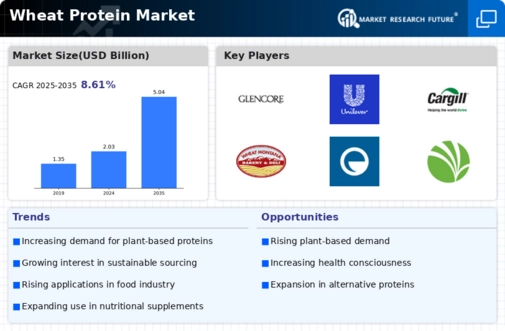
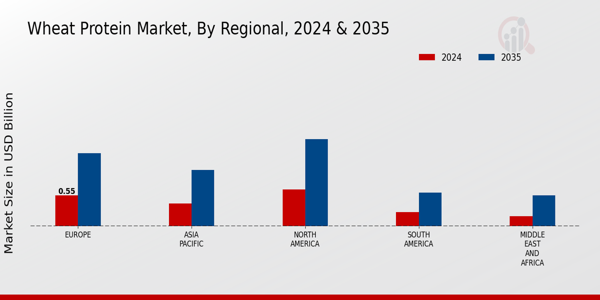
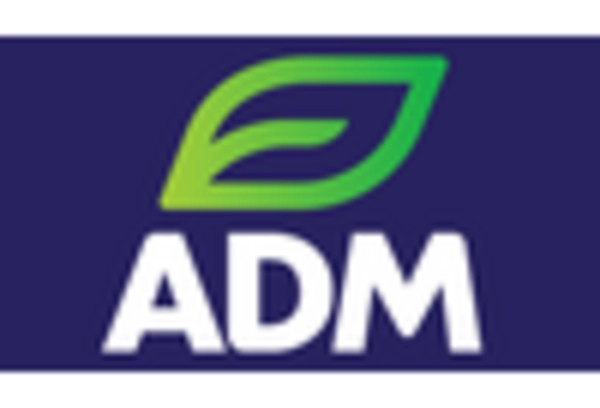
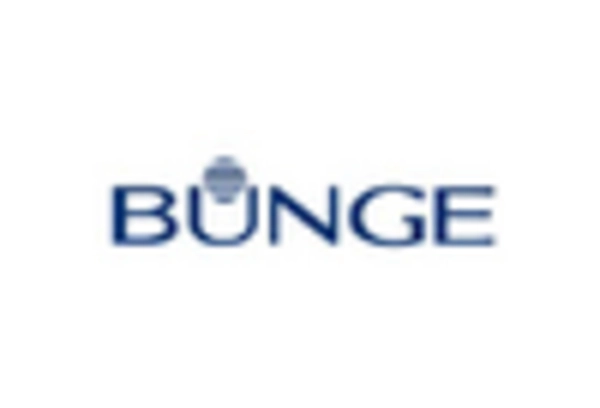
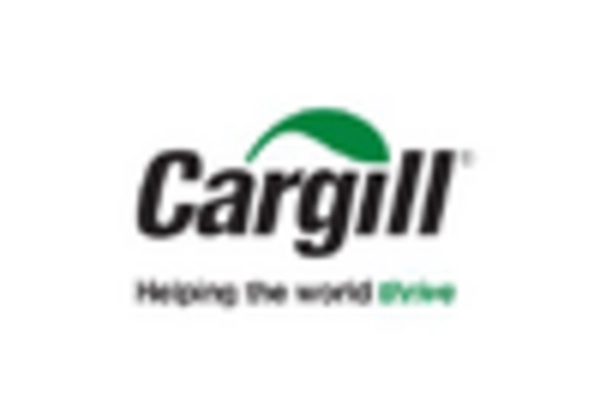
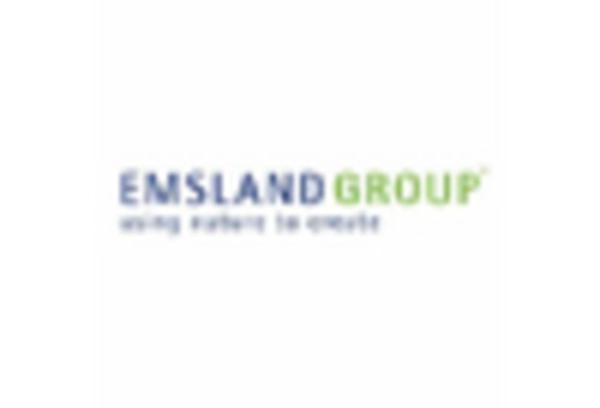
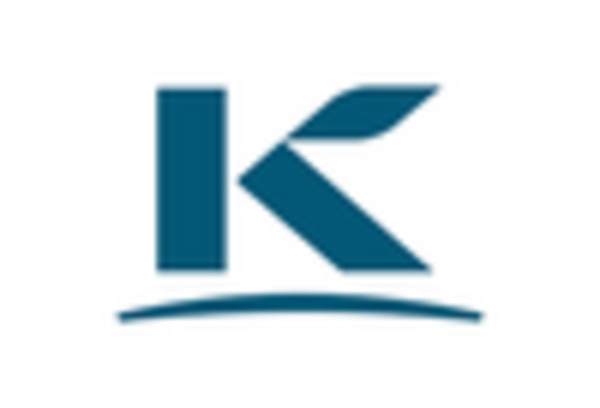
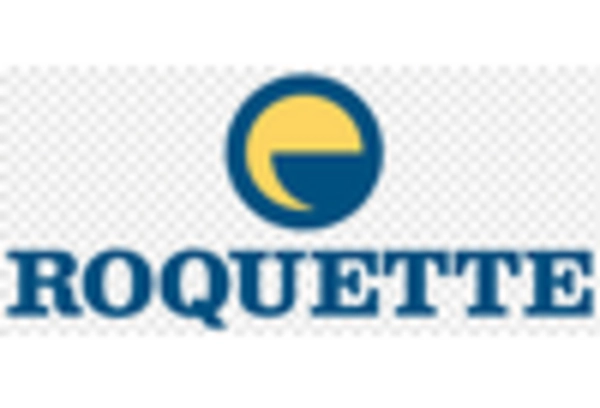

Leave a Comment